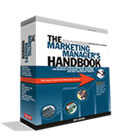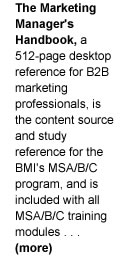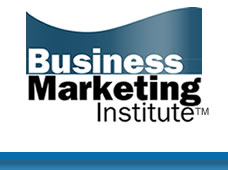


Tuesday Marketing Notes (Number 33—May 16th , 2006)
A B2B Marketing Newsletter for BMA Members
____________________________________________________________
MAKE SURE YOU CONTINUE TO RECEIVE EACH ISSUE OF TUESDAY MARKETING NOTES—CLICK HERE TO RENEW YOUR FREE SUBSCRIPTION
(NOTE: if you’ve already signed up previously at this link above, no need to do so again)
INDEX TO PAST ISSUES OF TUESDAY MARKETING NOTES:
Click here
Special Savings Promotion for BMA Members—Click here
–––––––––––––––––––––––––––––––––––––––––––––––––––––––
Postcard Deck Layout, Production, Execution, and Follow-Up (Part 2)
by Eric Gagnon
Last week, we covered the benefits of using postcard decks to build up, and bulk up, your own company’s mailing lists of potential prospects. This week, we’ll detail the steps involved in postcard deck copywriting, layout and execution, and the critical steps involved in following up with respondents to your postcard deck offers.
As mentioned last week, the small, 3 x 5 size of a postcard limits how much you can tell about your company’s product. So, you need to optimize your offer on the front end, to generate the maximum number of leads from the postcard deck mailing, and then further quality these leads with follow-up mailings and downstream contacts by your company’s sales team.
The best offer to use with postcard decks is a free informational premium. This item opens up a communication channel with potential prospects, offering them something of value, preferably something they can use in their daily work: This could be a report, a white paper, book, video, or specialized software program, among many other possible items.
While there are infinite ways to design a brochure, mailing piece, or Web page, there are but a few tried-and-true layout techniques for postcards used in card decks that insure your card’s free offer and call-to-action will stand out and be noticed by the average, disinterested prospect who is flipping through the postcard deck.
You can use these techniques to drive the process of producing an effective card deck layout, when working with your agency, layout designer, or marketing consultant. These layout techniques are also effective for producing any stand-alone postcard mailing using a free promotional offer.
Card Layout: Making Your Card’s Free Offer
FREE—it’s the most compelling word in marketing. Start your postcard layout by printing the word FREE in large type on the upper-left side of the card. Why upper left? Because most of your prospects are right handed, you don’t want their right thumb covering this important word when they’re holding the card in their right hand.
Premium description: To the right of the word “FREE,” print a two-line description of the item you’re offering, as in this example:

Superhead: Optionally, you can also put a line above FREE and your description to call attention to your offer by identifying who your offer is for, like so:

Free premium product shot: A picture of the free premium being offered is a compelling visual element that adds motivational interest to your layout:

Offer paragraph: Next, print a paragraph of copy with a bold-faced line to lead your reader into:
• What they need to do to get the free item;
• Repeat the description and benefit of the item;
• Describe your company, and your product’s major benefit
Here’s an example of a text paragraph for a postcard:

Call-to-action and contact info: Make it clear to your prospect what you want them to do next to get the free premium—call your company, link to your Web site, or fill out and mail the card.
Since you want to make it quick and easy for prospects to contact you when they’re most interested in your offer (and you want to follow up with them just as quickly), it’s always preferable to ask them to call you or link to your Web site, instead of asking prospects to mail cards back to you:
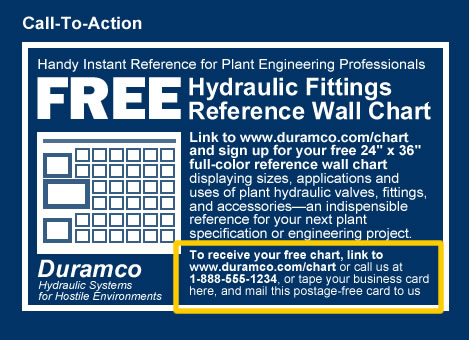
Ask the prospect to call your sales contact number, and print a unique URL (such as: “yourcompany.com/chart”) with a landing page entry form for the prospect to enter their contact info to receive their free premium, either by download (for most information-based premiums), or by mail, for physical items. Of course, if you’re offering an item for download from your Web site, make sure to track and log accesses to this page from card deck respondents.
Following Up: Your Bounceback Response Mailing Piece
While you are producing your card layout, you should also be producing the “bounceback” package that you will send to prospects who respond to your postcard offer. In addition to the informational premium (booklet, report, white paper, disc, etc.) include a brochure, cover letter, and other sales materials as appropriate, such as a follow-up “please have a sales rep contact me” reply card to help your prospects tell you their level of interest in your product.
“Requested materials” line on bounceback envelope: Make sure to print a line on the front of the outer envelope of your bounceback package to tell your prospect: “Here is the [free premium item] you requested,” or “Enclosed: Your Free [Item] that You Requested,” to separate your bounceback mailing piece from the business junk mail your prospect receives each day.
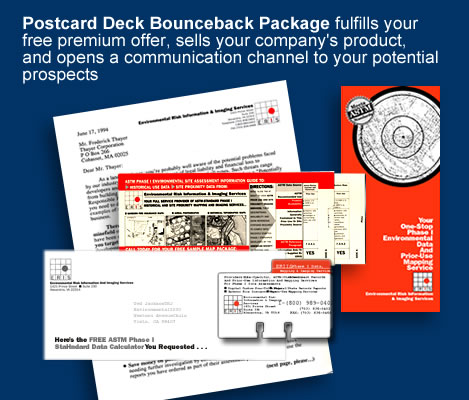
Next Steps: Ongoing Communication, Qualification, and “Showing What You Know”
Postcard deck mailings help you build mailing lists of individuals in your industry who probably have varying levels of interest in your product. As a whole, these leads will be of lower quality compared to leads generated by your other marketing projects.
Therefore, card deck responses will almost always require additional qualification, through further communication by mail and e-mail to these respondents. For example, you can mail to your card deck respondent list again when you have special promotional offers for your product, and you can cherry-pick this list by job title, company, or territory to assign selected leads to your company’s sales team to keep your company’s sales reps busy working leads and closing new sales.
Information to capture on the sign-up landing page: Many marketers get too greedy and demand too much personal information from respondents on sign-up pages for free premium offers. If you “get all demographic” on your respondent and ask for all kinds of the usual qualifying information at this stage—company buying intention, company size, number of employees at company, etc.—respondents give up and leave your sign-up page, and your response rate goes down.
Ask only for the minimum level of information you need to fulfill the premium offer with respondents: When fulfilling premiums by e-mail, ask only for first name, last name (both optional) and e-mail address. When fulfilling by mail, ask for name, title (optional), company, mailing address, and e-mail.
While you are signing up respondents on your dedicated landing page of your company’s web site, it’s a good idea to offer a “free updates” or “free newsletter” option, to establish an opt-in email connection with respondents, for sending them articles, news updates, white papers, reports, and other useful, relevant, and informative information. Leave this item checked by default for the respondent to un-check if they do not wish to receive these e-mail updates.
Postcard Deck Mailings Open a Communications Channel with Your Potential Prospects
Distribution of useful and informative material to potential prospects on your mailing list boosts the effectiveness of your company’s marketing program, and helps position your company as a problem-solving thought leader in the minds of your potential prospects. “Showing what you know” offers your company an edge against your competitors, who may still be following the conventional path of hitting these same recipients over the head, over and over, with the usual worthless junk mail and say-nothing print advertising.
Establishing the open channel: A respondent from a postcard deck may not be a buyer today, but may well become a prospect in several months, either by his own need, or after receiving a steady stream of mail and e-mail articles, reports, white papers, updates, and promotional materials from your company. At the very least, you keep your name and product in front of them so they’ll remember your company when they’re ready to buy. Keeping this open channel alive with the respondents on your mailing list is the best way for you to build and develop your market, to increase sales for your company.Comments? Questions? Send them to me at: eric@realmarkets.net
_____________________________________________________________
Eric Gagnon (eric@realmarkets.net), is president of GAA (www.realmarkets.net), a sales and business development consulting firm, and is the author of The Marketing Manager’s Handbook, the master study guide for the Business Marketing Association’s Marketing Skills Assessment, Skill Builder, and Certification (MSA/B/C) programs.
For more information on The Marketing Manager’s Handbook, available to BMA members at a special discount, link to:
http://www.businessmarketinginstitute.com/book.html
_____________________________________________________________
Test, Train, and Build Your B2B Marketing Skills for Better Sales Success: BMA Announces New Assessment, Training, and Certification for B2B Marketing Managers
For more information on the new BMA Marketing Skills Assessment, Skill Building and Certification (MSA/B/C) training and professional development program, visit http://www.businessmarketinginstitute.com
